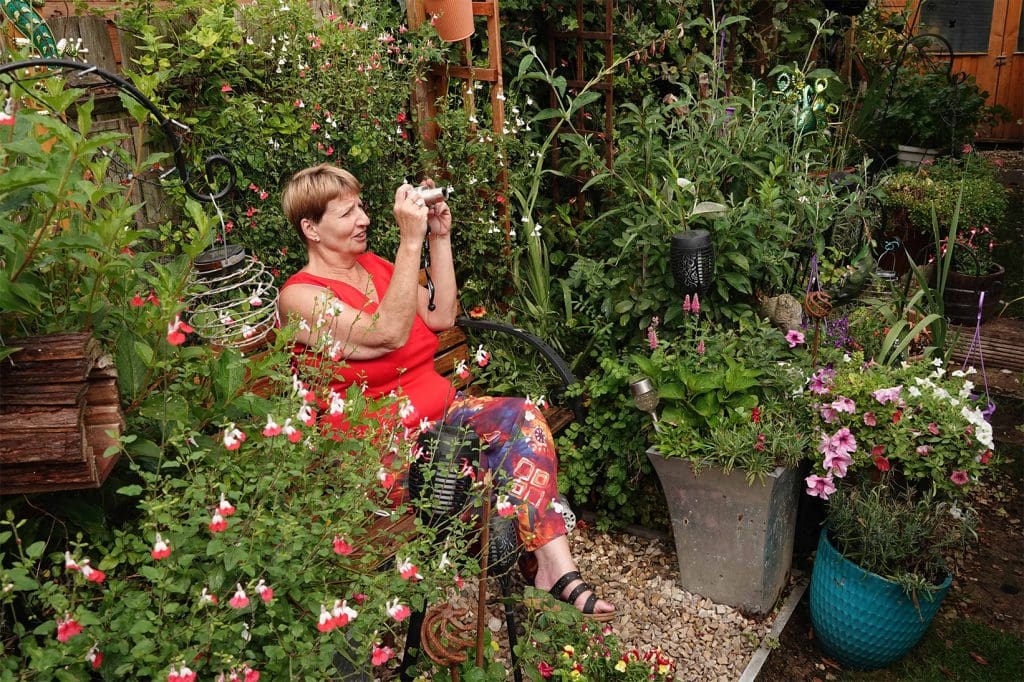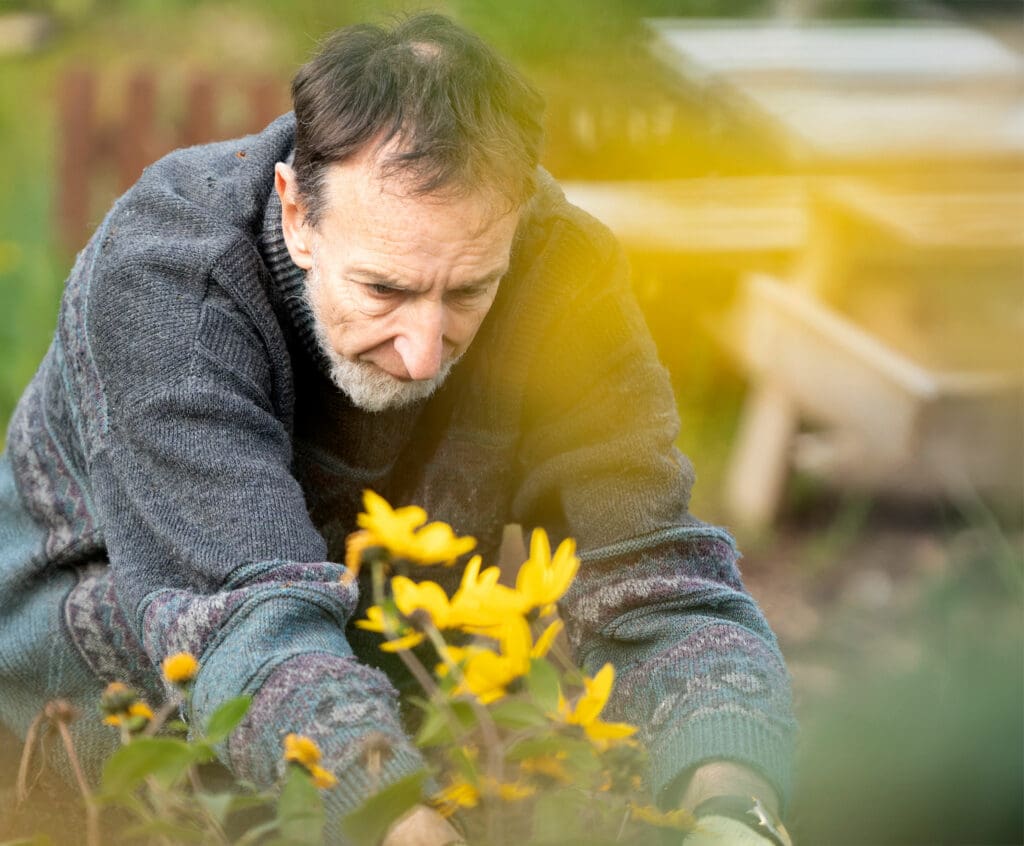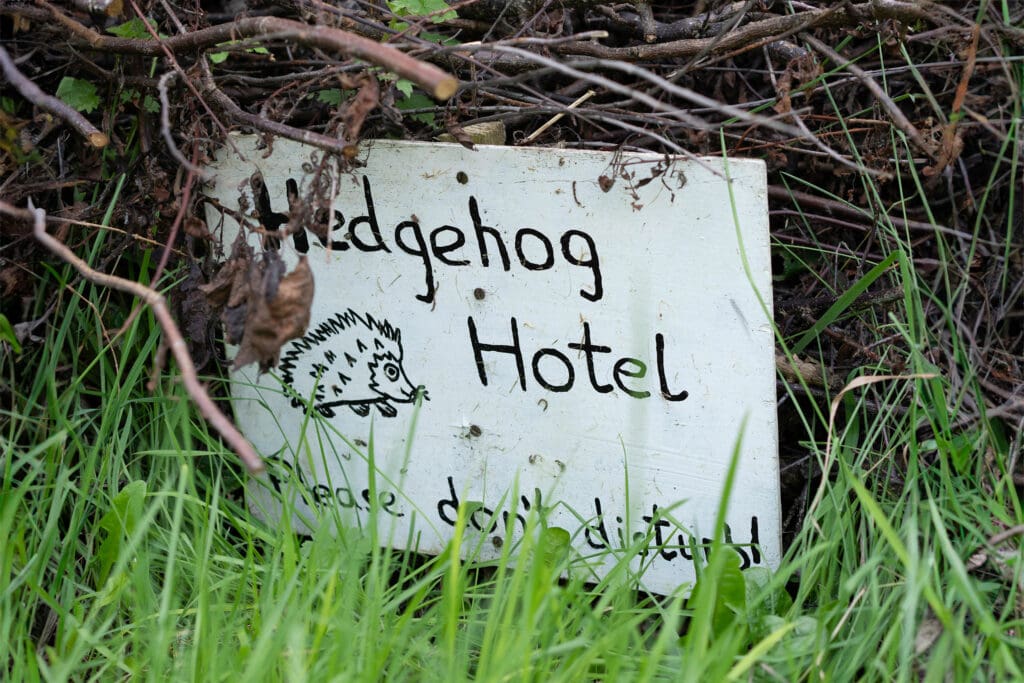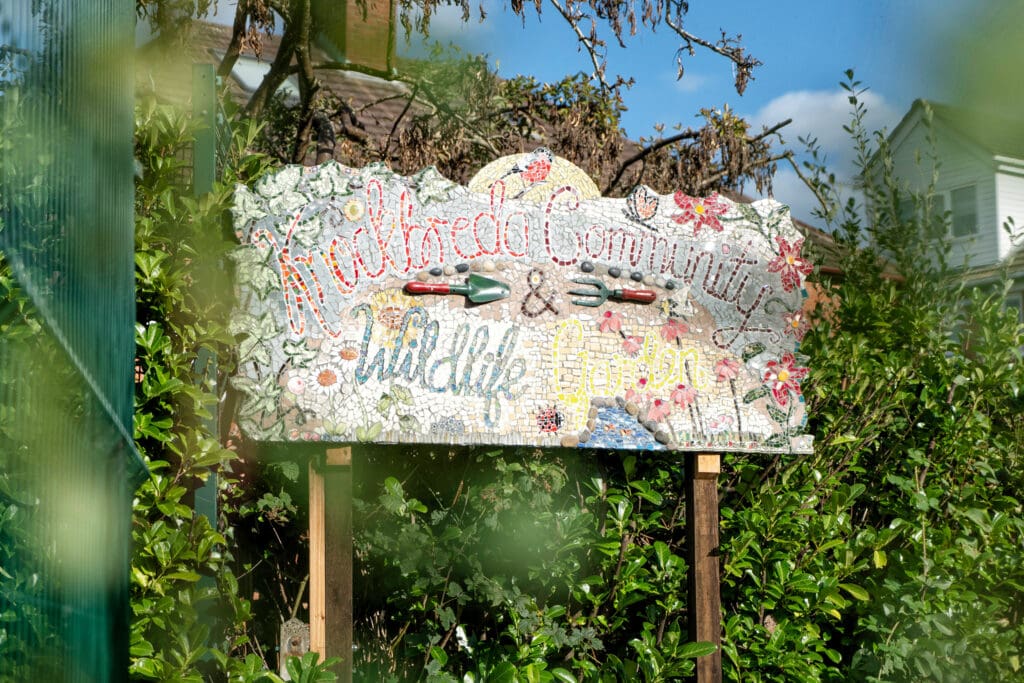Knockbreda Community Wildlife Garden: “It might seem a bit of a mouthful,” says Ken Orr, one of the garden’s founders, “But all the words are important because gardening, community and wildlife are all fundamental to what we do here.”
The garden, in Belfast, is just under half an acre of former allotments, tucked behind the Methodist church and bordered by houses. The idea was born during the Covid crisis when a small group of local people realised that they shared a desire to transform this abandoned space. Some members of the fledgling committee brought gardening skills, others a conservation background and others community links. From there, it grew into the thriving hub it is today.
As much wildlife as possible is catered for, with a particular focus on attracting pollinators. Flowers are chosen carefully, with native species used where possible. An orchard has been planted at the top of the garden and beehives are stocked with the native Irish Black Honeybee.
With lots of people coming and going in this busy space, parts of the garden are left undisturbed to provide refuges for wildlife, with features such as Hedgehog hotels and habitat piles.
I asked Ken which wildlife feature is his favourite. “Oh, the pond, definitely! It is the best thing you can do for wildlife in a small space. In spring it is full of tadpoles, and a succession of native plants bring colour, from Marsh Marigolds to Bogbean and Water Forget-me-nots. And many birds come down to drink, including Starlings and Goldfinches.”
The garden continues to evolve and improve. New for 2024 is a line of Teasels, while willow arches at the entrance should soon thicken up.
What stands out most in this garden is how it strives to achieve multiple benefits, and it succeeds, too. It is a productive food garden, it helps wildlife, but it also helps bind communities together.
Parts of the garden are left undisturbed to provide refuges for wildlife, with features such as Hedgehog hotels and habitat piles
With lots of people coming and going in this busy space, parts of the garden are left undisturbed to provide refuges for wildlife, with features such as Hedgehog hotels and habitat piles.
I asked Ken which wildlife feature is his favourite. “Oh, the pond, definitely! It is the best thing you can do for wildlife in a small space. In spring it is full of tadpoles, and a succession of native plants bring colour, from Marsh Marigolds to Bogbean and Water Forget-me-nots. And many birds come down to drink, including Starlings and Goldfinches.”
The garden continues to evolve and improve. New for 2024 is a line of Teasels, while willow arches at the entrance should soon thicken up.
What stands out most in this garden is how it strives to achieve multiple benefits, and it succeeds, too. It is a productive food garden, it helps wildlife, but it also helps bind communities together.
The garden has made such a name for itself that the Belfast Lord Mayor visited. It is a place that is alive, whether it be the hum of insects, or the sound of people enjoying the craic over a cup of tea. A plant sale is held each May so that people can take a bit of Knockbreda magic back home, and all five local primary schools have visited or are due to. There will even be an evening of singing in the garden later this summer. It is a shining example of how connecting with nature can benefit so many lives.
Some of the funding for the garden came from the Save Our Wild Isles Aviva Community Fund, run by WWF and the RSPB, which gave £1m to support UK community groups to protect and restore nature in their local area.
To learn more, follow @KnockbredaCommunityGarden on Facebook or pop in Tuesdays between 10am and 1pm.
Ken’s top tips for creating a community wildlife garden
- Having a range of people with different skills early on was important. It wasn’t just one or two people trying to drive it; it was a collective effort then and has continued being that ever since.
- Densely planted flowerbeds ensure that pollinators are well catered for.
We were lucky to have a landscape designer offer her skills. She created an initial layout for the garden, which helped guide us for the first 18 months. - In a community garden, it is important for people to have places to sit and be together in nature.
- None of us had any experience in setting up something like this. The key thing is to just go for it, and learn while you’re doing it!
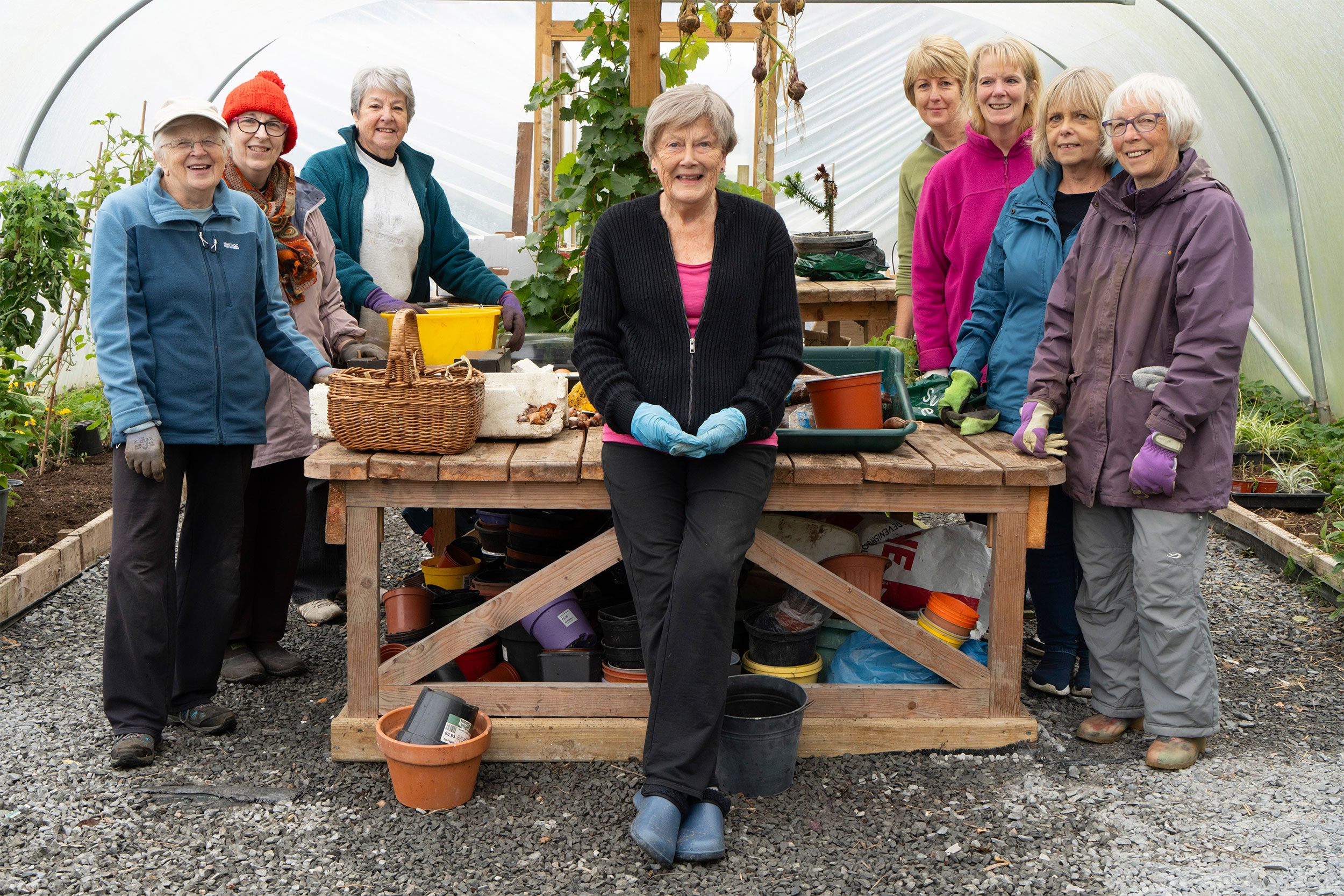
The committee at Knockbreda’s Community Wildlife Garden. Photo: Rachel Palmer
Wildlife gardening: making it a real community affair!
What does it take to run a successful venture such as Knockbreda’s Community Wildlife Garden?
“A big factor in its success is our wonderful committee,” Ken says. “There are about 12 of us, and we meet once every six weeks or so. Everyone brings all sorts of ideas to the table.”
The running of the garden is then a communal effort, including a group from the Probation Service of Northern Ireland who come every week to help.
An important ethos of the garden is that it is open to everyone. Nobody there is a professional gardener or environmentalist. The mental health benefits are really important, whether it be quiet places to sit and reflect or the opportunity for a shared coffee and a chat.
The Knockbreda Community Wildlife Garden, South Belfast is a bustling community garden, looked after by local volunteers working together to grow food and flowers, bring nature back into the city, and create a space and support system where everyone is welcome. UK nature is in crisis. If you love nature, act now. Find out how you can make nature part of your life and community at Save Our Wild Isles Video: WWF, RSPB and National Trust
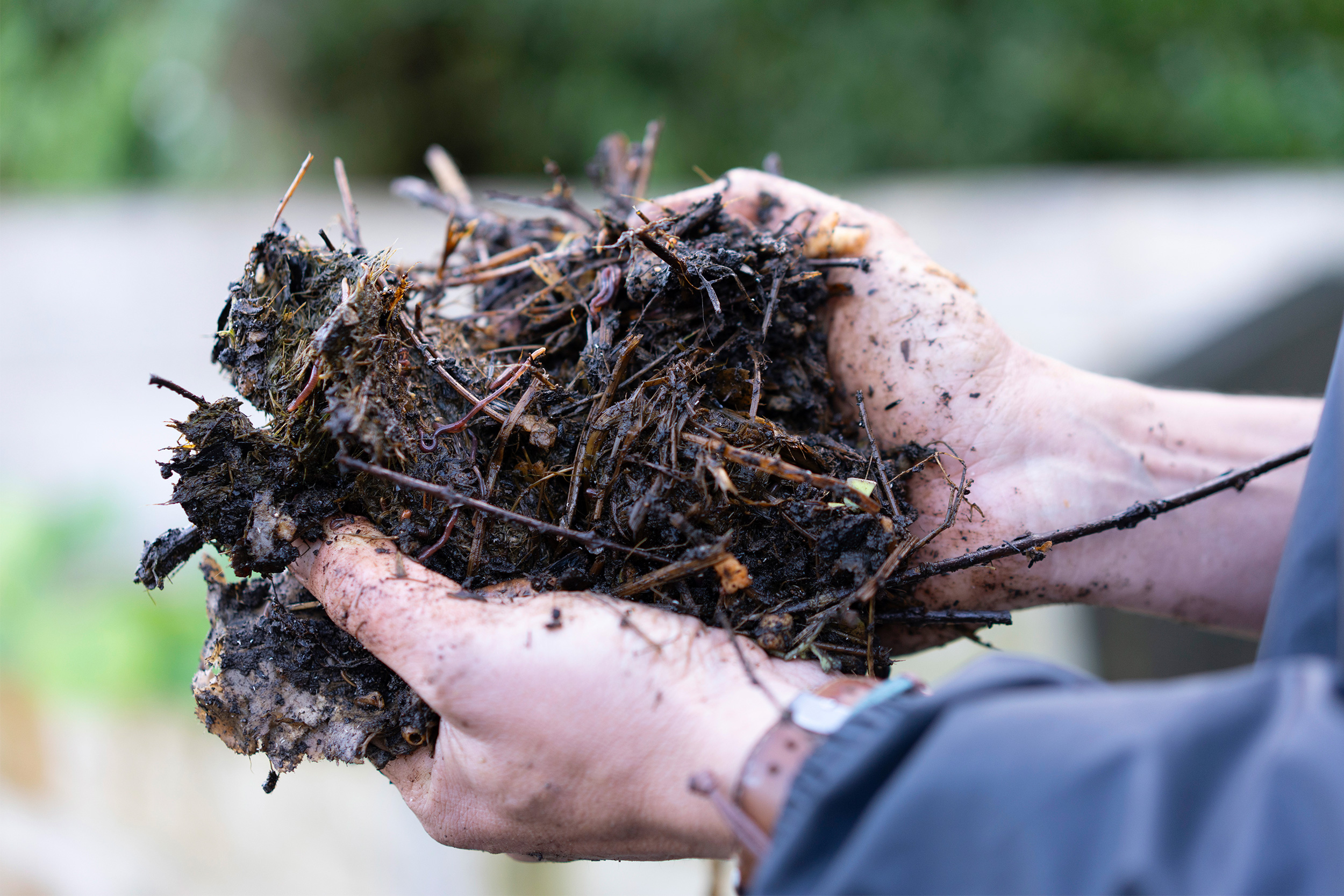
How to compost. Photo: Rachel Palmer
Make compost
At Knockbreda, they make as much of their own compost as they can. It is nature’s gift back to the garden! The secrets of good compost are:
- A mix of ‘green’ and ‘brown’ material. ‘Green’ includes grass clippings, weeds (without seeds) and vegetable peelings. ‘Brown’ includes chopped stems and even ripped-up cardboard.
- Wherever possible, chop or shred material as it will compost more quickly.
- Don’t allow the heap to become too dry or too wet.
- Get oxygen into the heap by turning it occasionally, but be careful not to harm wildlife such as newts and frogs.
- Don’t include any cooked foods, meat or dairy.
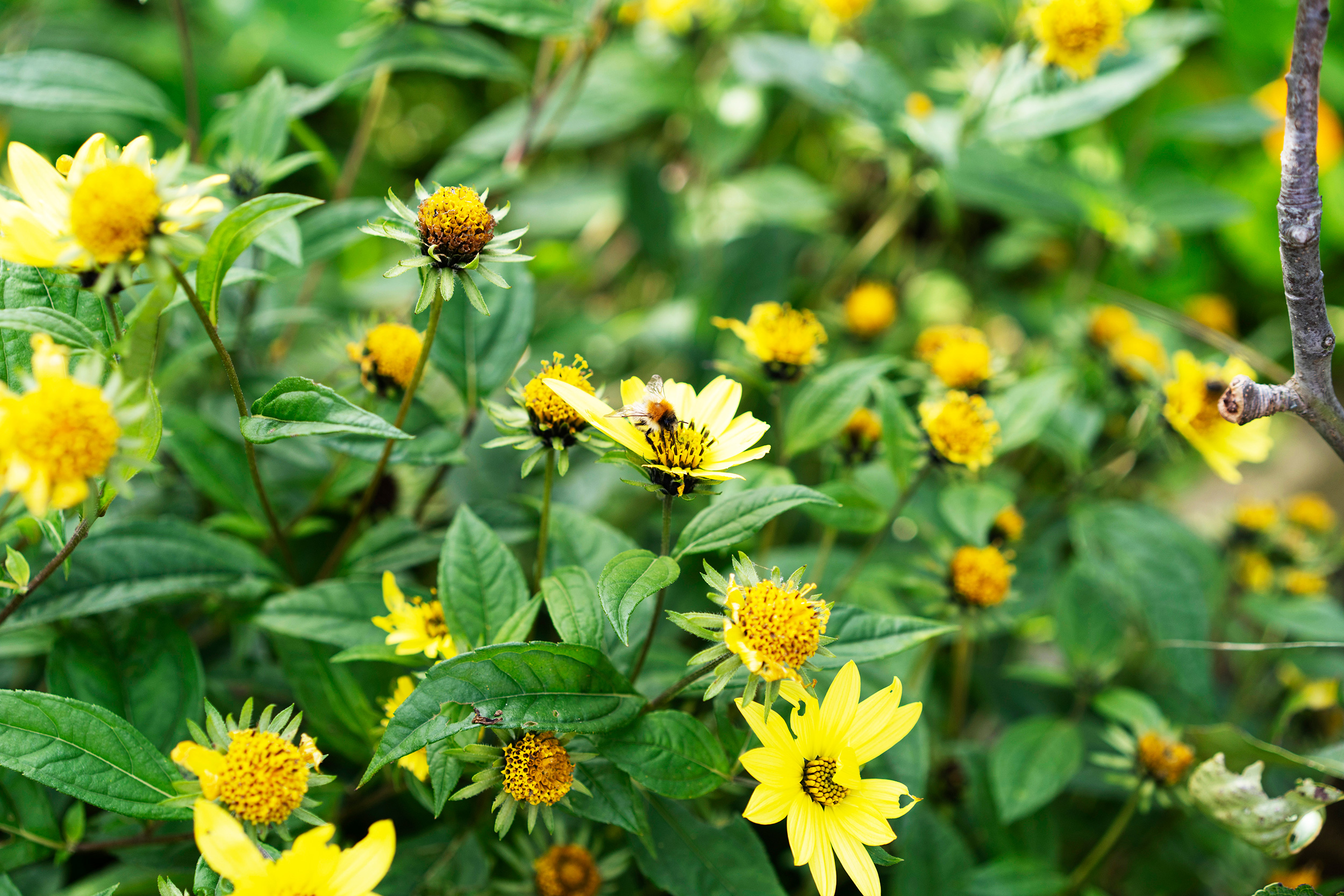
Sunflowers. Photo: Rachel Palmer
What to grow: Sunflowers (Helianthus)
- One of the stalwart wildlife-friendly plants at Knockbreda is the sunflower.
- The best-known varieties are the annuals, grown from seed each spring. Some of these varieties can reach 4m or more in a season.
- The obvious wildlife value is their seed-packed seedheads. However, the flowers can also be very popular with bees and other pollinators.
There is a wide range of varieties to try, but avoid those that have been bred to have no pollen. - Sow in pots of peat-free compost in April or May. The seedlings are very tasty to snails and slugs, so keep them safe until they are well grown.
Plant out in a sunny position after the last frosts when they are 30cm or so high. All the tall varieties of sunflower will need to be supported with a bamboo cane. - Just as good for wildlife, with smaller but abundant flowers in later summer, are the perennial species and varieties, such as Lemon Queen. They will form a clump that spreads each year, the top growth dying right back in winter.
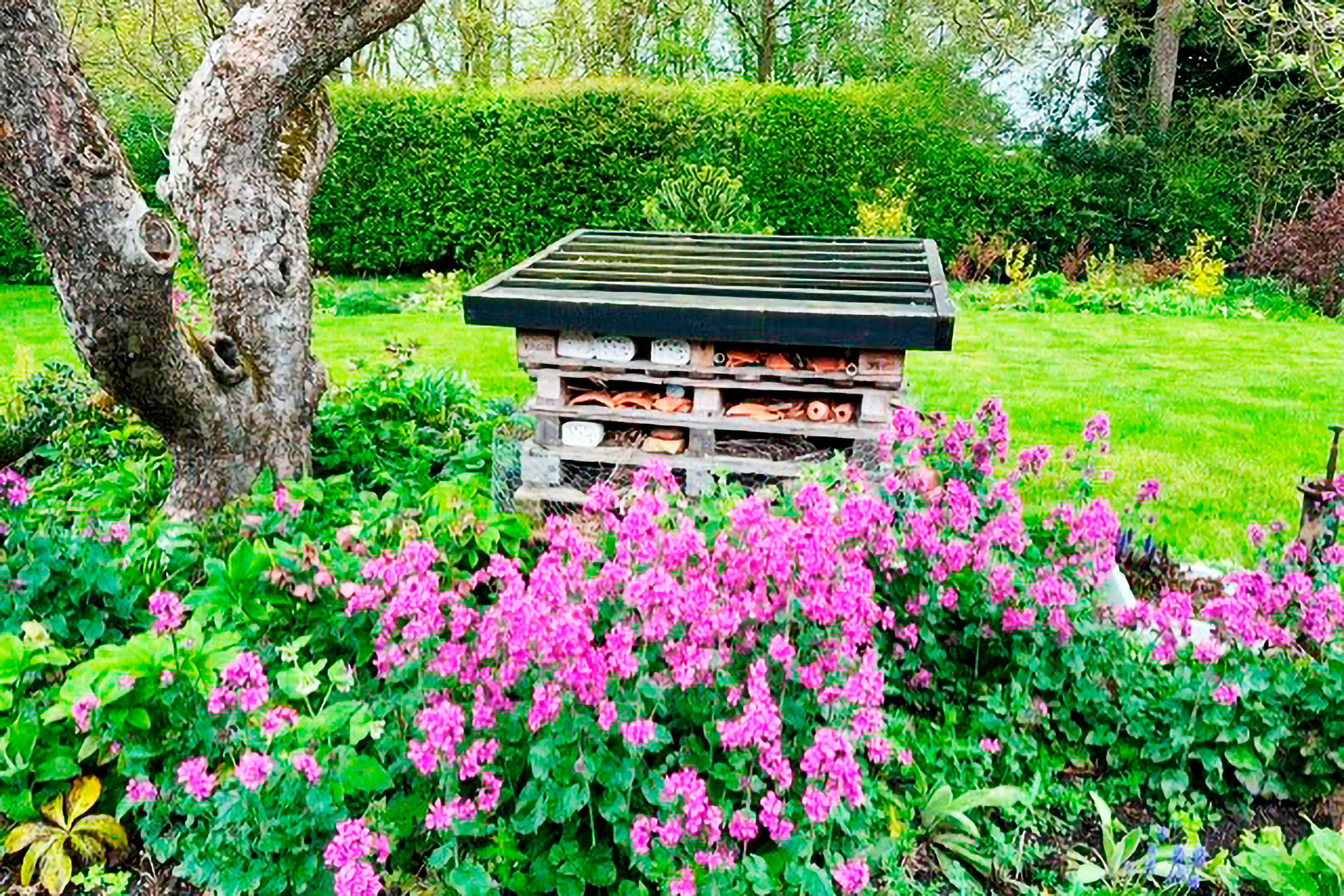
Claire’s bug hotel. Photo: Claire Lacey
New hotel opens for business
“Here is my bug hotel. I built it on an old concrete plinth that we found under a huge apple tree. I used reclaimed materials to build it, including pallets from deliveries and leftover all-weather board for the roof. I filled the spaces with bricks, breezeblocks, stones, slate, bark, small logs, broken plant pots, straw, cork, pine cones, moss, dried leaves and old seed heads.
Around the bug hotel, I’ve planted a variety of plants including hellebores, White Comfrey and White Dead-nettle, forget-me-nots, primroses, ferns, holly, foxgloves, eryngiums and more.
Since building the structure, I’ve seen many species in and around it – various solitary bees, newts, shieldbugs, centipedes and lacewings, and dragonflies often dab on the wet moss on the roof.
It never ceases to amaze me how wildlife just adapts to the spaces we create for them.”
Claire Lacey, North Bedfordshire
Adrian says: Claire’s bug hotel faces south into the sun, which is exactly what solitary bees need. If you feel inspired to create your own, don’t feel that you have to place it in a dark, shady corner.
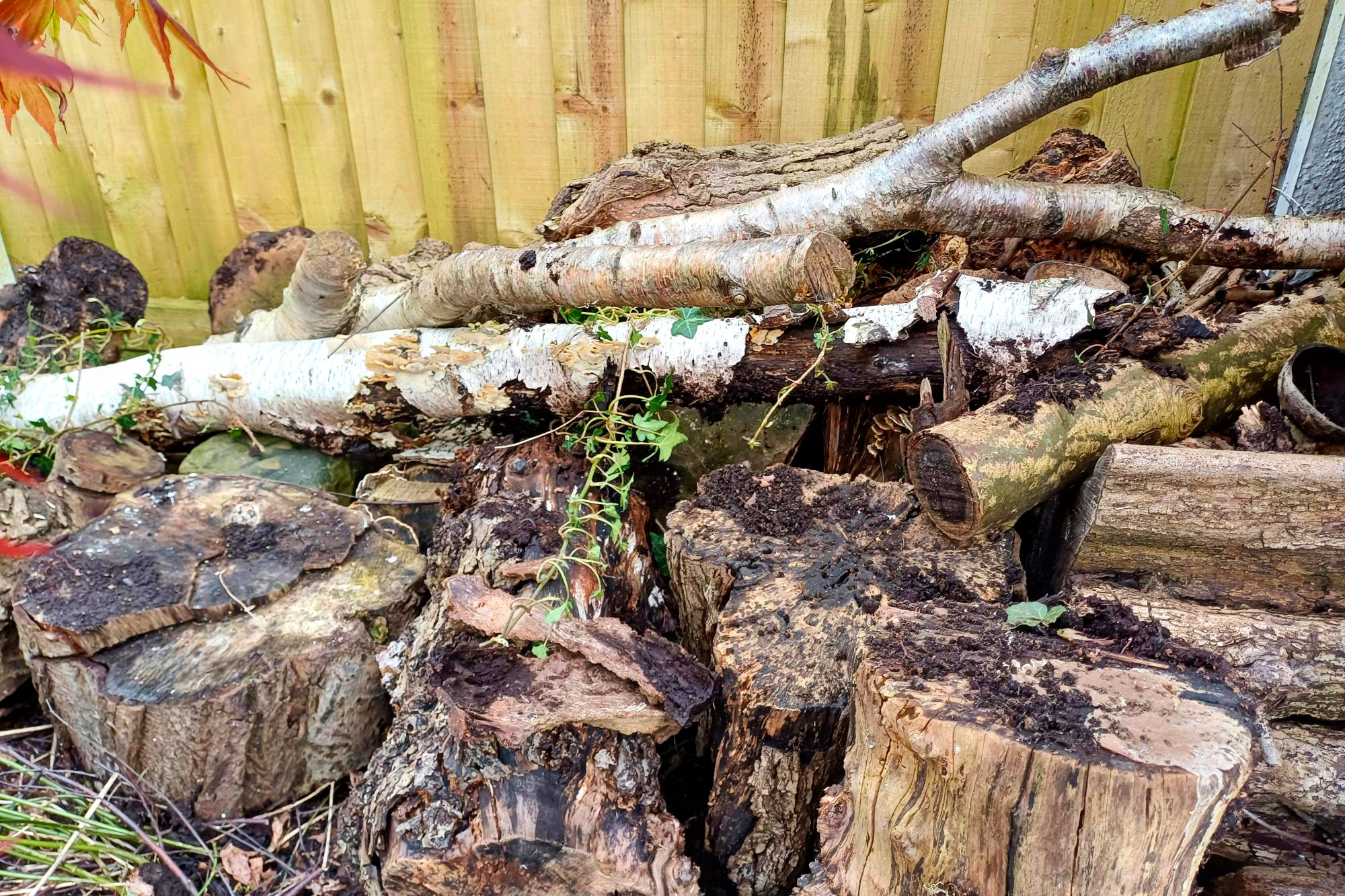
Chris’s log pile. Photo: Chris Dilworth
Logged in
“Recently I built a log pile with old tree stumps and planted some heathers and ivy amongst it. It will be great for the birds and insects!”
Chris Dilworth, Leeds
Adrian says: …And if you can’t find any logs, remember a stick pile can work wonders, too.
Use old, dead logs to create an inviting home and feeding ground for insects, toads, newts and bees. Read more here. Video: The RSPB
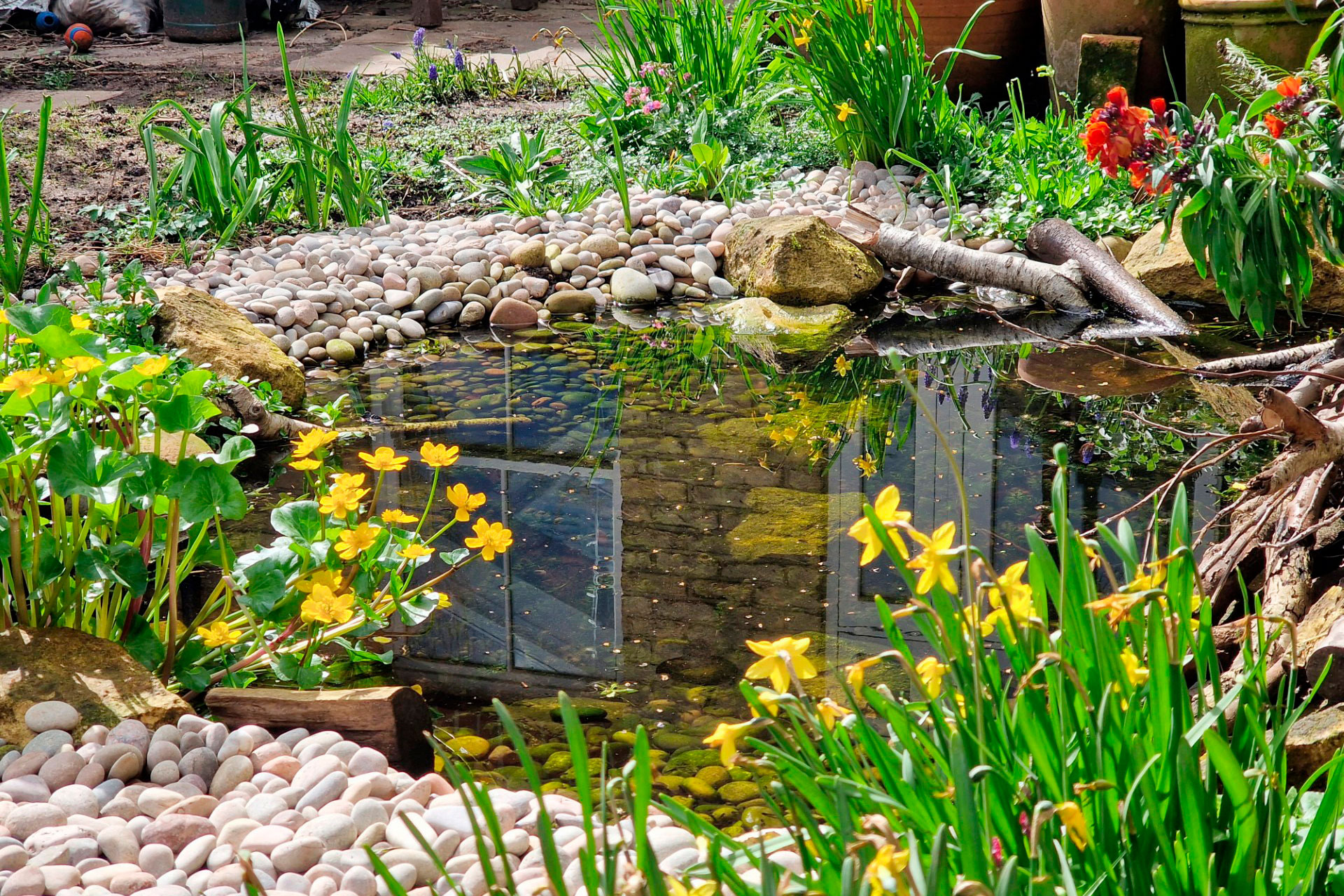
Ben’s small yet perfectly formed garden. Photo: Ben Smith
Super suburbia
“I came to wildlife gardening through cooking; a few pots for herbs on the patio, then an allotment – not bad places when catering for pollinators. But my biggest leap forward was when I came across a large frog in my garden leaf litter. Within a couple of years, I had dug two ponds – now formed into a single, larger one.
From there, the birds came, as did the dragon- and damselflies, but the crowning glory was last summer when a juvenile Grass Snake took up residence.
My garden is tiny – about 55 square metres – in a run of terraced suburban houses. I have talked to my neighbours and secured holes in our fences to allow animals through.
This spring, the frogspawn was off the scale – 60 to 80 pairings, up from about 20 last year and none five years ago. Food for the Grass Snake and for my soul.”
Ben Smith, South London
Grassroots
Nature on Your Doorstep is the RSPB’s portal for making changes for wildlife where you live. It is a chance to engage as many people as possible with helping wildlife in their outside spaces, whether that be in a garden, on a balcony, a windowbox, an allotment or – like at Knockbreda – a community project.
Check out our webpages for advice and inspiration, and join our community and Facebook group, sharing ideas with people across the country. Sign up for a monthly email full of wildlife gardening tips at Nature on Your Doorstep and send us your garden stories to RSPBmagazine@rspb.org.uk
You might also like
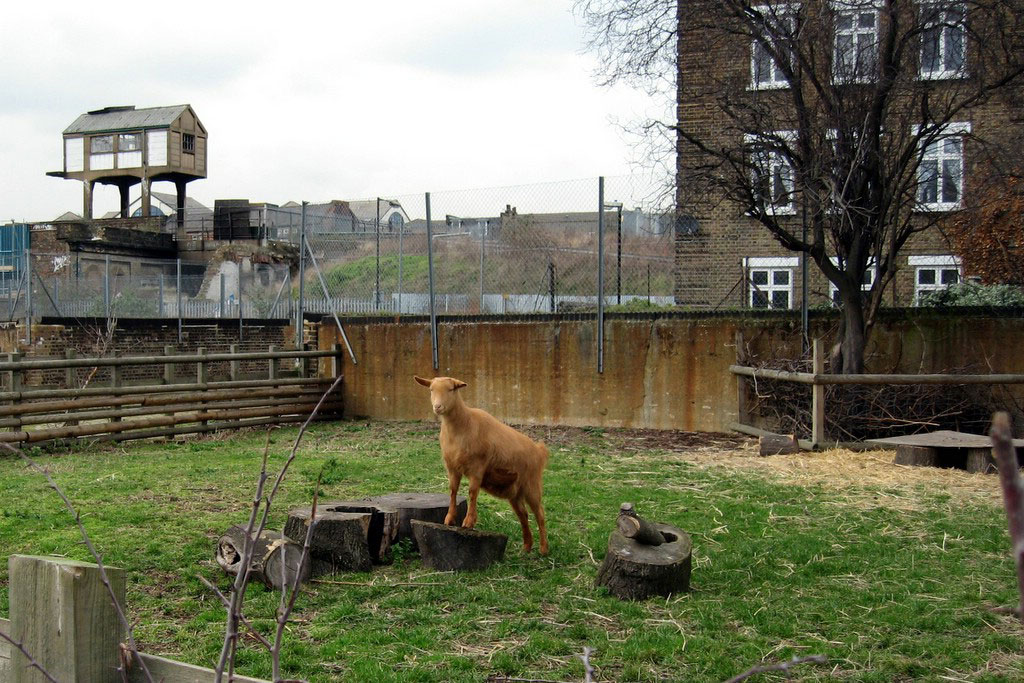
Comment: Farm life in the city
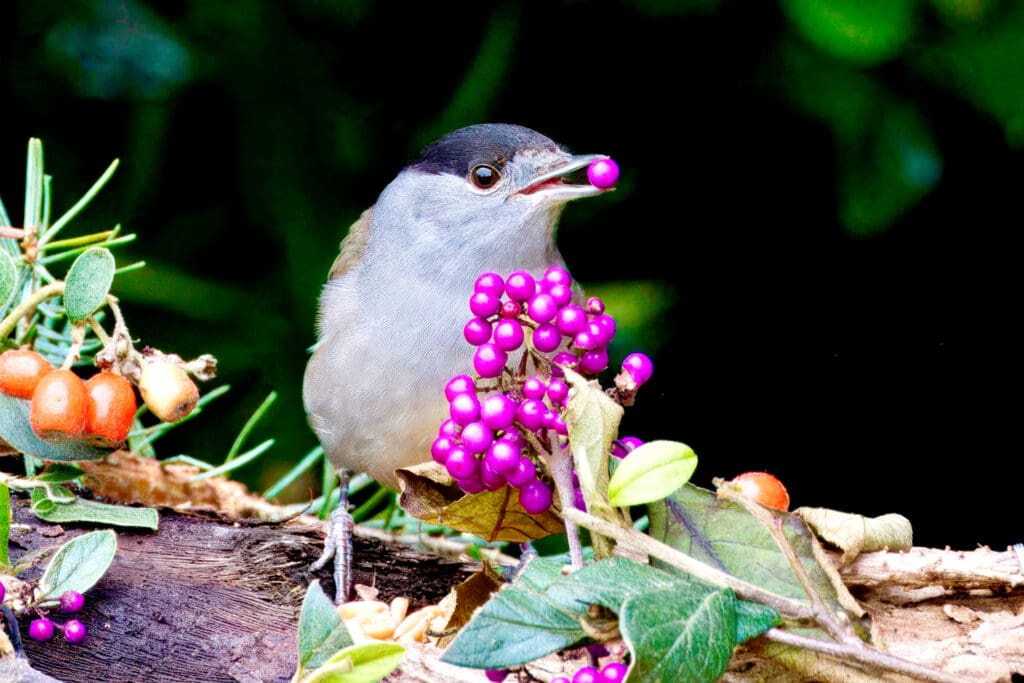
Your photos – spring/summer 2024
